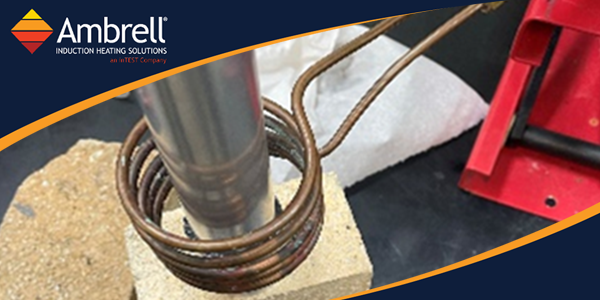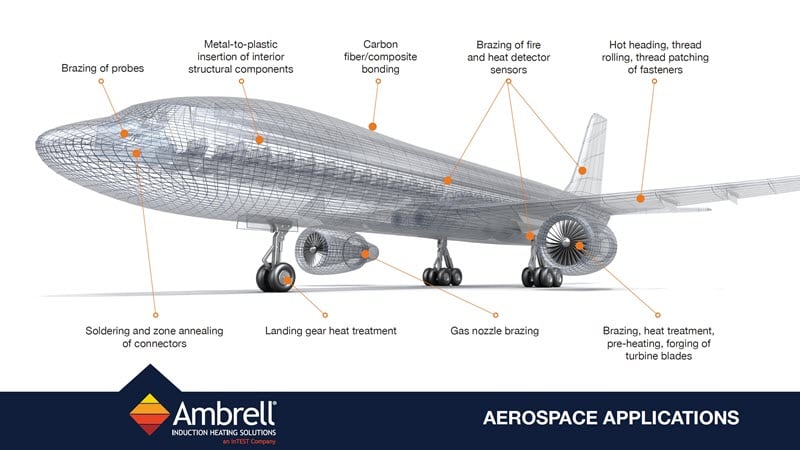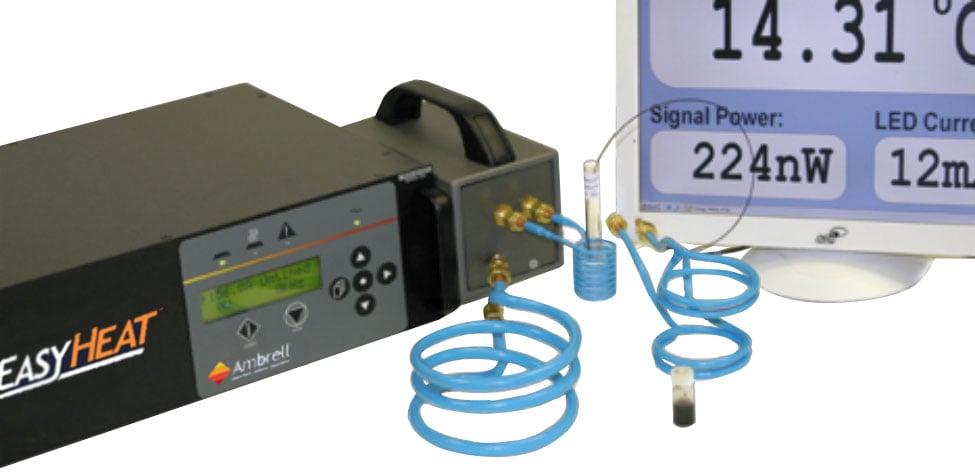Induction Brazing an Aluminum Assembly
Objective A company wanted to assess using induction heating for their aluminum assembly brazing process, and contacted THE LAB at Ambrell to utilize...
Applications
Applications: More
Applications: More

Industries:
Industries: More
Industries: More
Industries: More

Products:
Products: More
Services:
Services: More

Learn:
Learn: More
About:

Induction forging is a process in which an induction heating system preheats metals and presses them into shape using a hammer or press. The applications for induction forging vary greatly, but before you get started assessing your applications, it's helpful to have a good understanding of the process. So, let's get started.
Read our guide: Induction Heating for Forging
More Induction Forging Application Notes
First, it's important to understand that induction heating is a non-contact process that uses the main principles of electromagnetic induction in order to effectively produce heat. Electric current can flow through a material when it is placed in a strong alternative magnetic field; this causes Joule heating. With magnetic materials, the excess heat is generated below the Curie Point -- the Curie point is the temperature at which certain magnetic materials undergo a sharp change in their magnetic properties. The Curie point of iron, for example, is 1,418 degrees Fahrenheit (770 degrees Celsius).
The depth of the generated current is determined by both the frequency of the alternating field as well as the material's permeability. Materials with high permeability (100–500) are easier to heat via induction heating. Iron and its alloys respond well to induction heating due to their ferromagnetic nature.
Before getting started with your own applications for induction forging, you need to understand the power that it requires. The power supplies needed for induction forging can vary greatly, from just a few kilowatts to multiple megawatts. The component geometry can also dictate power supply frequency, which can vary from about 50 Hz to 200 kHz. Keep in mind that most applications for induction forging use a range of between 1 kHz and 100 kHz.
Selecting the correct power for your induction forge application requires you to calculate the thermal energy needed to raise the chosen material to the necessary temperature within the allotted time frame. After this measurement is determined, you'll have to factor in other components such as radiated losses, coil losses, and other system losses. (And, THE LAB at Ambrell can help you do this with complimentary applications testing.)
After determining the power consumption necessary for an induction forging application, you'll have to consider the next main parameter -- the output frequency of the power source. While the heat is primarily generated in the surface of the component, it's critical to choose a frequency that offers the deepest and most practical penetration depth into the work piece. You should also keep in mind that it does take time for the heat to penetrate toward the center of the work piece. Furthermore, if too much heat or power is applied too quickly, it is possible to melt the work piece's surface while the core is still cool.
The top three benefits of induction forging are fast heating cycles, accurate heating patterns, and cores that remain relatively cold and stable. Induction forging, however, also boasts many benefits. First and foremost, the process is highly calculated, and therefore, controllable. Traditional heating systems, such as gas furnaces, require a preheat and shutdown, whereas induction forging applications do not. Furthermore, the heat is available on demand with rapid availability. If a downstream interruption to production ever occurs, the power can easily be turned off, preventing unnecessary energy loss.
Induction forging is also an energy-efficient process. This is a result of the heat being generated within the component as opposed to around it. The transfer of heat and energy is made much more efficient because the induction heating system only heats the work piece, not the atmosphere surrounding it.
Ultimately, understanding the processes and benefits of induction heating and forging applications is essential to determining what is induction forging and whether or not it's right for your process.
We've already discussed some benefits of the induction forging process; specifically, its controllable processes and energy efficiency. However, there are many more benefits that most people aren't quite aware of. For example, unlike other types of heating, induction forging does not create any harmful or toxic byproducts when the process is complete. It's a completely clean process that does not contribute to environmental waste. No smoke or toxins are created as a result of induction forging.
Furthermore, part of the answer to the question, "How does forging work?" includes the element of consistency with results. When all is said and done, the process is highly controllable, which means it can be easily and quickly repeated time-after-time with little-to-no change in the result. There's nothing unexpected or surprising about induction forging because there's no guesswork involved. Such uniform results help to prevent the need for post-forging machining.
Additionally, induction forging causes high temperature rises, ensuring that each component reaches its necessary temperature quickly and efficiently. This reduces the scale as well as the possibility for surface defects of the material upon completion.
Bar end heating is a type of forging in which only a portion of the bar is forged. These applications typically include hot heating of bolts and some mining tools. For example, the end of a bar might be heated and then hot heated to create a large fastener. Bar end heating is very similar to induction forging.
Ultimately, the efficiency of an induction heating system for a specific application depends on four factors: the characteristics of the part itself, the design of the coil, the capacity of the power supply, and the amount of temperature change required for the application. Understanding the detailed processes of induction forging is the best way to determine whether or not your business can benefit from forging with induction heating equipment.

Objective A company wanted to assess using induction heating for their aluminum assembly brazing process, and contacted THE LAB at Ambrell to utilize...

Induction heating is a process that uses electromagnetic fields to heat electrically conductive materials. It has been used in numerous industries...

Induction heating, a process that uses electromagnetic induction to heat electrically conductive materials, is often thought of for large industrial...